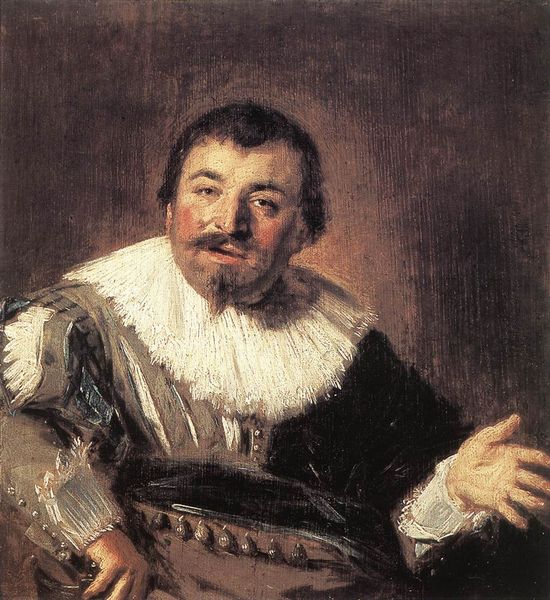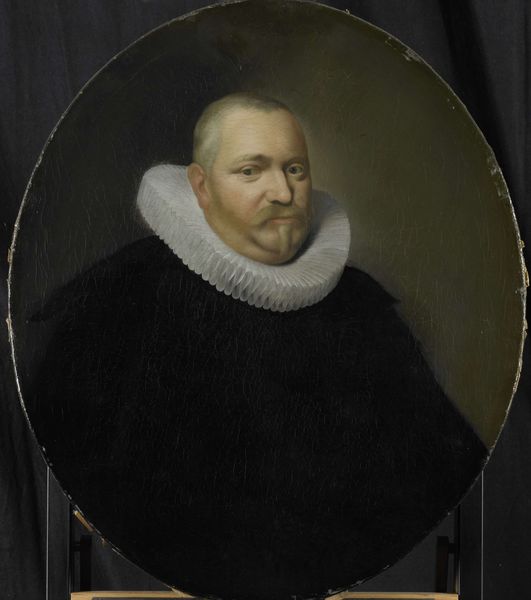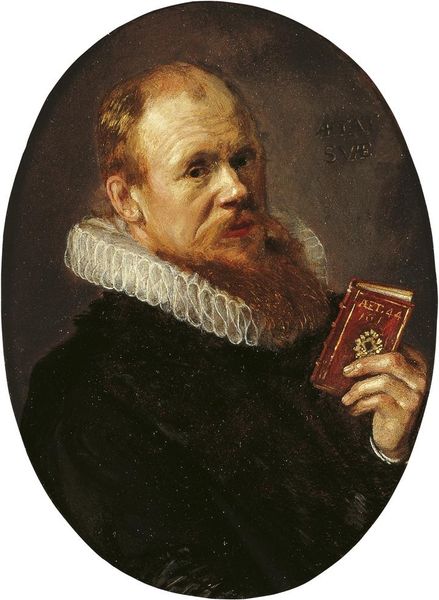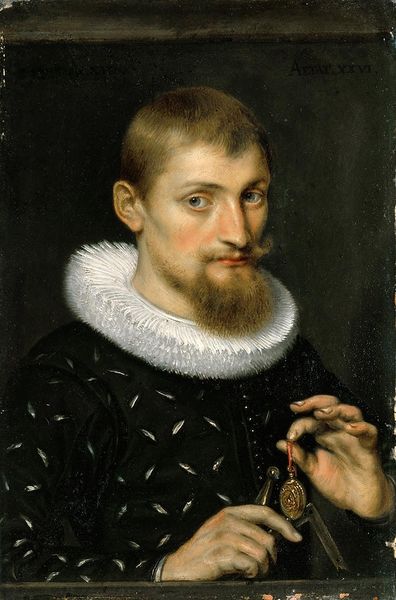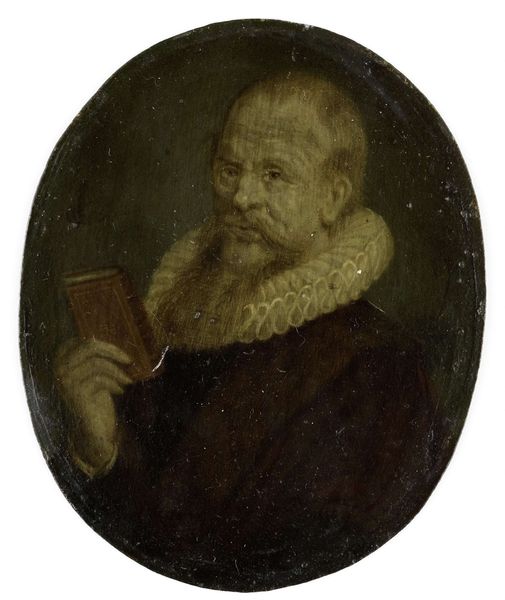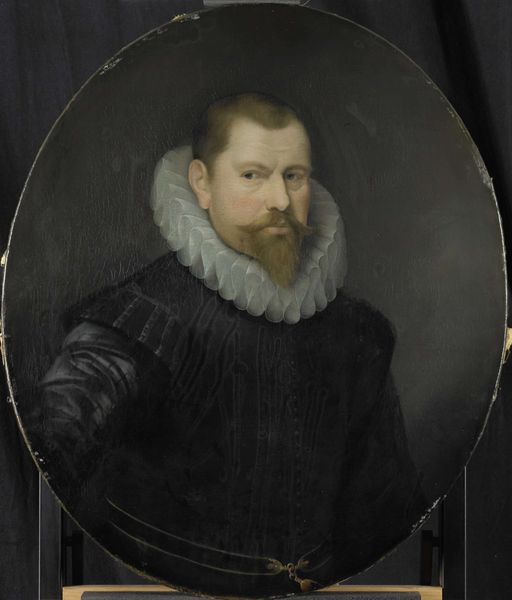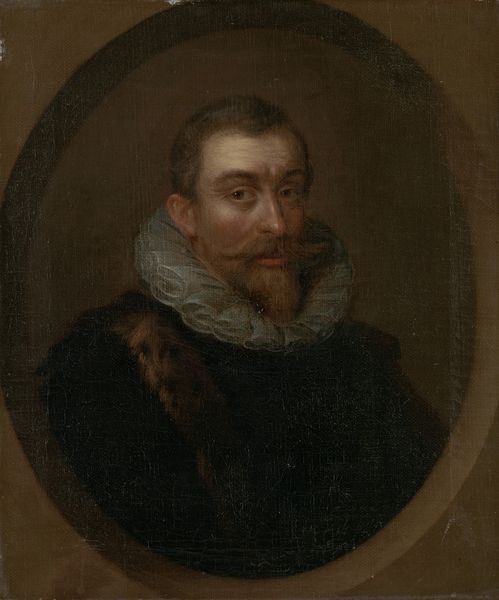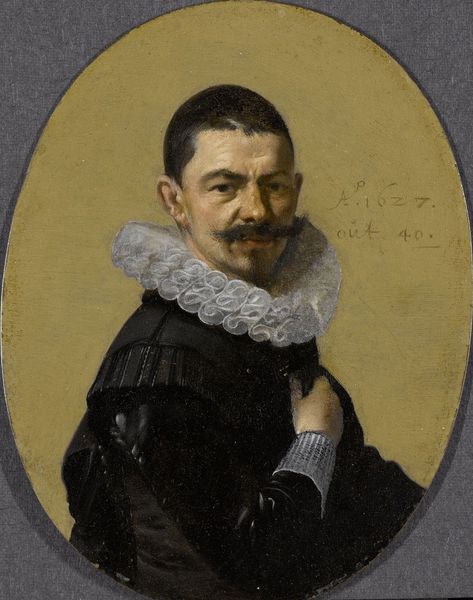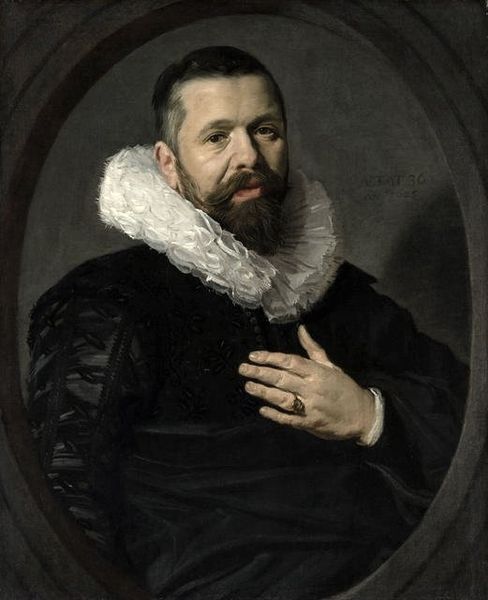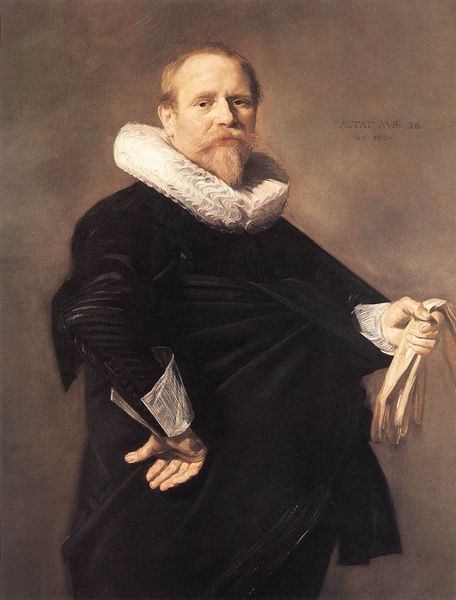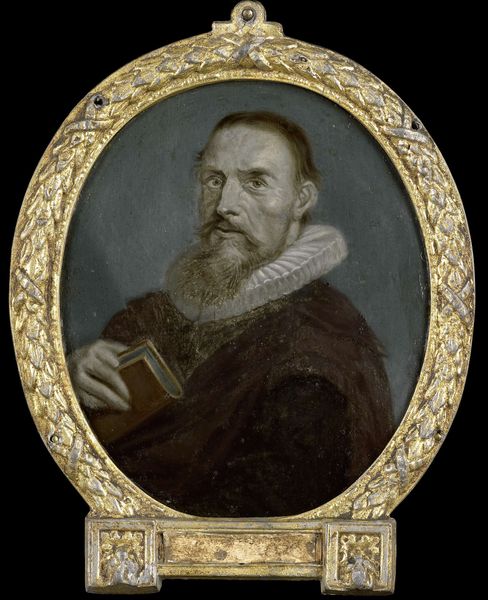
painting, oil-paint
#
portrait
#
baroque
#
dutch-golden-age
#
portrait
#
painting
#
oil-paint
#
realism
Copyright: Public domain
Editor: This is Frans Hals’ "Portrait of a Man" from 1627, currently residing at the Staatliche Museen zu Berlin. What strikes me is his slightly bemused expression. What's your take? Curator: Well, let's consider the socio-political context. This portrait emerged during the Dutch Golden Age, a time of immense economic and artistic flourishing after their independence. Notice the man’s elaborate ruff and tailored doublet. It’s not just about likeness; it’s a careful construction of identity and status reflecting the sitter’s social standing within the newly independent Dutch Republic. Do you see how his hand gestures slightly, almost inviting interaction? Editor: He definitely looks like he’s ready to strike a deal! So you're saying his posture and clothes tell us something about the new social hierarchy? Curator: Precisely. These portraits became important signifiers of status for the rising merchant class in Dutch society. Unlike earlier aristocratic portraiture which emphasized lineage and divine right, Hals' paintings celebrate individual achievement and civic engagement. It's less about who you were born to, and more about who you've become in this burgeoning capitalist society. The loose brushwork adds to the feeling of immediacy, a modern approach befitting the times. Editor: So, seeing this wasn’t just a depiction of an individual, but a statement reflecting the changing social landscape? Curator: Exactly. Hals was adept at capturing this shift. He helped define how this new, prosperous class wanted to see themselves represented in the public eye. Think of it as visual branding for a rising social order. Editor: I never thought of it that way. It really sheds light on how art can reflect bigger societal changes! Thanks!
Comments
No comments
Be the first to comment and join the conversation on the ultimate creative platform.

